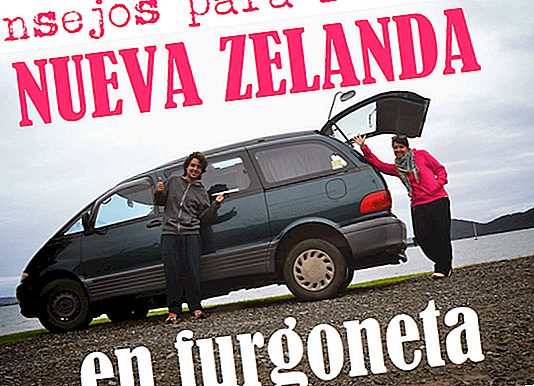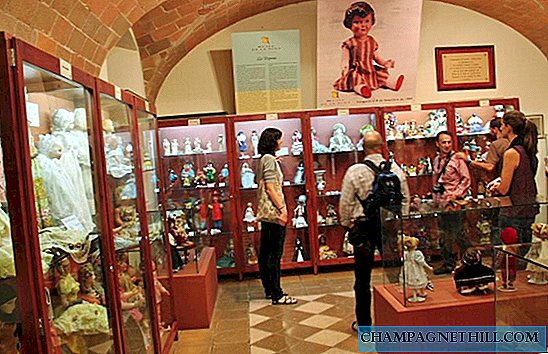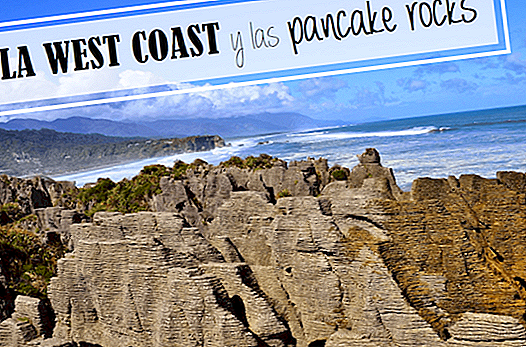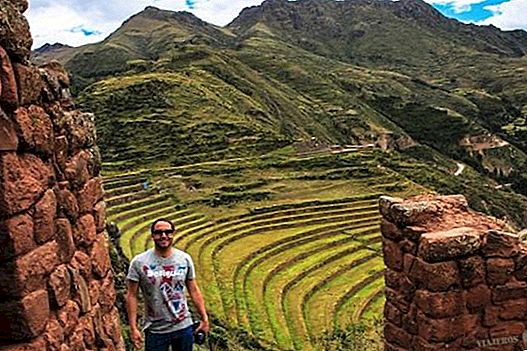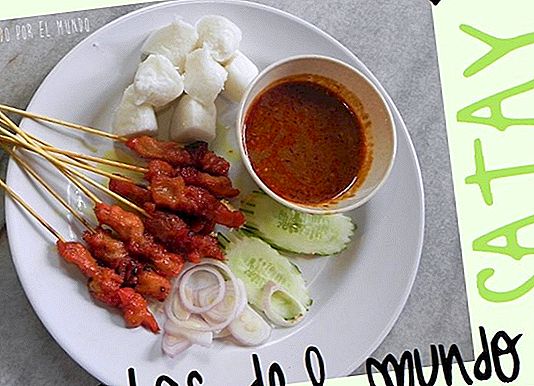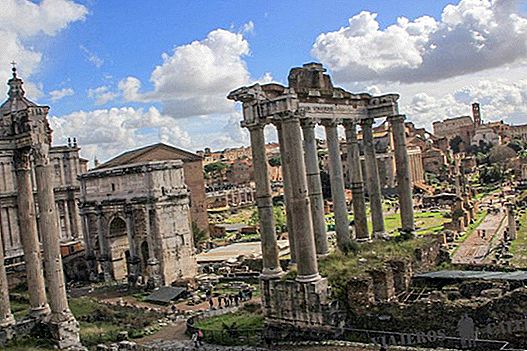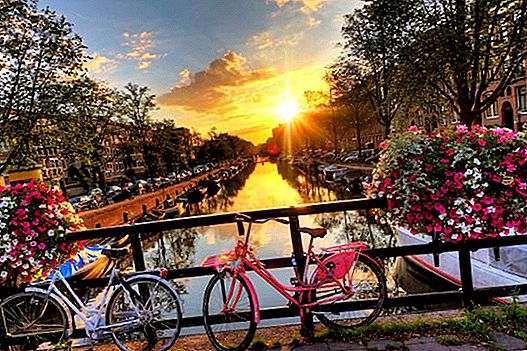Day 23: Easter Island: Ahu Tahai, Ahu Ko Te Riku, Rano Kau and Orongo, Vinapu, Ana Kai Tangata and Ahu Akivi
Today is our first full day on Easter Island so we get up a little later, taking advantage of the incredible views we have from our room at the Hangaroa Eco Village Spa and when it is 8:30 or so, we approach the Poevara Restaurant, where a buffet breakfast awaits us, that as soon as we see it, it already charges us with energy for what awaits us today, two of the most important visits to Easter Island: Rano Kau and Orongo.

Breakfast at the Poevara Restaurant
When we started with the preparations for this trip to Chile in 31 days, we were quite clear that Easter Island would be the last place we would visit, in addition to wanting to dedicate enough time to, in addition to knowing as much as possible of the island, the We could enjoy with tranquility. Although we had been told that in 2-3 days you can visit the island, something that materially, we have to say that it is possible, we prefer to extend our stay a few more days, reaching 6 full days plus 2 half days, on arrival and the output.
This approach has allowed us to enjoy Rapa Nui to the fullest, in addition to being able to vary the planned visits depending on the weather, since on Easter Island it usually rains when you least expect it, something that if you are only 2 or 3 days, you can Be annoying to visit the different tourist places.
When it's about 9:30 in the morning we leave Hangaroa Eco Village Spa to pick up what will be our rental car the next few days and that we have rented with the Rent a Car OCEANIC company.
From the hotel we are about a kilometer from the main street of Hanga Roa, where the car rental company is located, so we hang our backpacks and get on our way, touring the streets of this small town where We only have to spend a few hours to fall in love and know, that at some point we will return to spend a season here.
If you do not have a car, a good option is to book this tour of Tahai, Orongo and the Rano Kau volcano with a guide in Spanish.

Streets of Hanga Roa
We arrived shortly before 10 in the morning and after reviewing what will be our car, taking several photos and specifying the delivery day, we set off to go back to Tahai, where we were yesterday, the day we arrived in Isla Easter in the afternoon, but where we wanted to come again, since the best light is in the morning, something that although it may not seem important, both for the photographs and for the visit, it is more than interesting to consider.
Car rental in Easter Island
There are several options for rent a car in Easter Island:
- Although we always booked through Rentalcars on all our trips, this time we could only do it in Chiloé, since for Easter Island they had no choice.
- Rent directly with the accommodation. In our case, when staying at the Hangaroa Eco Village Spa we did not have that option, but if you stay in one of the many Easter Island cabins, you can get, in most cases, rent directly with the owner.
- Rent with a car rental company, just as we have done with Rent a Car OCEANIC. The price is 45000CLP per day and does not include insurance, since in Easter Island, for what they explained to us there is no extra.
If you don't want to rent full days, for example 2 and a half days, they make an average and you don't have to pay full days.

Our rental car in Easter Island for the next few days
- We do not know if you can rent cars, in our case we prefer a 4 × 4 directly, since although most of Easter Island roads are paved, on many occasions, to go to the most remote places you have to drive on unpaved roads , for which with a tourism it would be unfeasible.
With the rental car already in our power, the next thing we have to manage is to buy the ticket that will give us access to all places on Easter Island. This is something that although you want to avoid, you should do, since among the places that are included, are all the important places of Rapa Nui.
Easter Island Ticket
In 1935, the protected area of Easter Island was declared a National Park, and then in 1995 it was declared a UNESCO World Heritage Site and since 2016, co-administered by CONAF and the local community Ma'u Henua.
To access the Rapa Nui National Park you have to pay a ticket, which although some time ago, they only asked in Orongo and Rano Raraku, today they ask for it in almost 99% of the park's locations, so we recommend You buy the ticket the first day you want to start visiting the island to avoid surprises.
The ticket to access the Rapa Nui National Park is valid for 10 days from the first check you pass and is priced at $ 80 - 54000CLP (adults) and $ 40 - 27000CLP (children).
With it you can visit all the points of the island as many times as you want, except Rano Raraku and Orongo, which can only be visited once.
You can buy it at the stand that is in the access zone of Mataveri Airport during the arrival time of the flights, at the Central Office located on Atamu Tekena street (it is right next to the Oceanic car rental office, where you will see a tattoo shop and just behind a small white two-story booth where you put a ticket) or at the CONAF Provincial Office in Mataveri.
Being in the downtown area of Hanga Roa, we chose to approach the Central Office, where we see that the price of 30000CLP has risen to 54000CLP from January 1, so we have to pay that new amount, although with an "extra "and since this year, the validity has increased from 5 to 10 days.
As we mentioned before, if you are several days in Easter Island, you can plan visits based on the weather. In our case, today that a sunny day has dawned and the weather forecast is to be maintained, we have decided to follow a route that takes us through some of the most emblematic places of the island as Rano Kau and Orongo, among many others.
South Route Easter Island (half day)
This route will take us through the southern part of Easter Island to visit Ahu Tahai, Ahu Ko Te Riku, Rano Kau and Orongo and Vinapu.
The time to make these visits will be approximately half a day, moving by car and taking the visits with great peace of mind, to be able to enjoy the places in the best possible way.
The first stop we make in the Tahai area, where we were already yesterday afternoon and where we were looking forward to returning to enjoy the place at this time of the morning, since the light at this time of day is perfect and offers a vision much more clear of the moais.

Tahai

Ahu Ko te Riku
This morning we can see much more clearly the stone circle or Paina that is right in front of Ahu Ko te Riku, which was the place where a ceremony was held when a son wanted to honor his father or mother. In this case a human figure was created, constructed of wood and bark cloth that was located within the circle of the family platform.
The son got into the figure and was telling different notable episodes of the honoree, thanking at the same time the assistance to all the guests.

Ahu Vai Uri's details

Tahai
As we intuited, and as it happened yesterday, the place although there are people, is very quiet and you can enjoy the place and a truly incredible and magical peace, which makes us feel again the energy and magic of the place.
While here, we also take the opportunity to approach again and take a photo of the ramp that was used to lower the canoes, which is between Ahu Vai Uri and Ahu Tahai and where we find a boy who is entering the sea with his boat, being able to see live part of this sport so famous in Rapa Nui.

Ramp to lower canoes
We are about to say goodbye, just for today, to Ahu Tahai when we unexpectedly hear that they call us. We only need to sharpen the ear a little to recognize the voices of Carles and Cris, who have come here to take some shots of the area and with whom we casually meet again. And how could it be otherwise, we took the opportunity to spend some time talking, in addition to taking a photo that reminds us of our meeting on Easter Island, one of the most magical places in the world.

Easter Island with Carles and Cris from Wetravel.cat
After just over half an hour of talk, we say goodbye and return to our rental car to go to two of the most incredible places in Rapa Nui, Rano Kau and Orongo, in the southern part of the island, from where we are about 3 and a half kilometers.
Already only by the road and the peace that is breathed both on the island and driving, we have to say that it is worth the trip, especially when we realize that it is much more than we expected and all that we still have to discover.

Road to Rano Kau
On the road that ascends to Rano Kau and Orongo we find what they say, they are some of the best views of the island and Hanga Roa. It is best to continue to the indicator that indicates the exact place of the viewpoint, from where you have spectacular views of practically 180º.

Rano Kau and Orongo road viewpoint
From here we clearly see Teravaka, the highest point on the island, and also Poike, the first volcano that erupted on the island and is located on the east end of the island. In addition, right in front of us we have the vision of Hanga Roa and the landing strip of the Mataveri airport, where we landed just yesterday.
Book the best rated Spanish tours and excursions in Easter Island by travelers:
- Tahai, Orongo and the Rano Kau volcano
- Easter Island and Anakena Beach Tour
- Offer: Ahu Akivi + Anakena + Orongo
- Excursion to Ahu Akivi
- Guided tour by Hanga Roa
The sensations at this moment overwhelm us and we have a mixture of skepticism for being here and almost not believing it, with a somewhat strange feeling when we think that if we look at the horizon we would not find land until we reach the coast of Chile, at 3700 kilometres.
After being here for a few minutes, enjoying the scenery, we return to the car and follow the road a few meters until we reach Rano Kau, where we park right in the front area, in the space for cars.
We only have to walk a few seconds to find ourselves in front of the Rano Kau viewpoint and in front of a truly spectacular image. That kind of images that although you have seen 1000 times in hundreds of photographs you have to live and you have to see in person to really realize the wonders of nature and how interesting and important Easter Island is that our world.

Rano Kau viewpoint

Rano Kau
Rano Kau on Easter Island
Rano Kau is the largest crater in Rapa Nui and is considered the most impressive natural wonder of the island. As we read, more than two million years ago, on Easter Island there was a great eruption with which this impressive crater of more than 1 kilometers in diameter was created.
If from the viewpoint the views are impressive, starting to walk, clockwise, is a real wonder, since as you move forward, the perspective is much broader, looking perfectly at the "bite" area of the crater, which is called Kari Kari and it is the only place that the sea is seen.
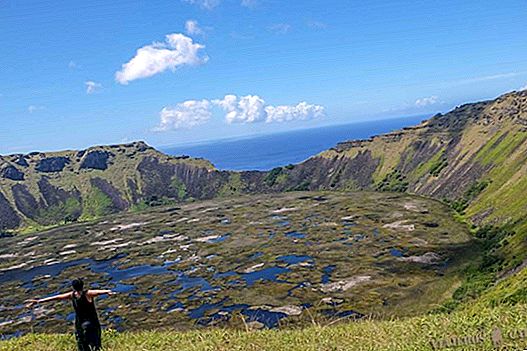
Awesome Rano Kau

Panoramic Rano Kau
Something that, although we had already seen in photos, attracts a lot of attention is to see how the lake inside the crater is practically covered with cattails, some plants that under water have in some cases more than 15 meters, and that form, together to the color of the water, a really incredible image.

Rano Kau
After being several minutes without a word, we continue walking for a few minutes until we reach an area from which we have a unique perspective, taking the opportunity to sit on one of the edges to be able to enjoy the most and get energized in one of the most impressive places We have had the good fortune to meet on our trips.

Rano Kau

Rano Kau
From here you can make a walk of about 20 minutes, bordering the crater that takes you to know Rano Kau and Orongo from this other perspective and we hope to be able to do some of the next few days, although they have told us that in this area of the island the wind usually blows a lot, so if this happens, we can be satisfied after doing enjoyed the Amazing views we had today.
It's about 12:30 at noon when we leave Rano Kau to go to Orongo another of the top Easter Island visits, which you can not miss and less being in the crater, since it is only 5 minutes away by car
After following the road a few meters further, we arrived at Orongo where we parked the car right at the entrance and where we directly passed to a room where ticket control is made and from where you pass directly to the visit.
Tell you that in the vast majority of points of interest in Easter Island there are no infrastructures as such, that is, there are no bathrooms, or possibilities to buy water or food. You will only find these services in Orongo, Rano Raraku and Anakena, so it is worth taking into account and more or less anticipating the needs of the day before leaving Hanga Roa to buy everything you need.
Orongo
With a spectacular location, on the edge of the Rano Kau crater, and surrounded by some of the most impressive cliffs on the island, Orongo is another of the most important, and most interesting, places on Easter Island.
Although the visit is quite intuitive, we recommend that you follow more or less an order not to miss any of the most important points. Upon entering, you must pass the cartels and the rest area that is on the right and turn right when you find a road that forks.
A few meters later you will find three motus They are facing the coast.

Motus
Motu It means islet and on Easter Island you can find 15, although these three are the best known and also the largest: Motu Kao Kao, needle-shaped, Motu Iti, the smallest and Motu Nui, the largest of the three.
This area is perfect to take advantage of, sit on one of the benches and simply enjoy the place, nature and also to understand and understand the Rapa Nui culture, since Orongo was one of the most important places on the island.

Orongo
At the time of the moras Orongo was an important ceremonial center in which the ceremonies of initiation and passage to the maturity of the children were celebrated, although at no time it was lived here, since its situation made fishing impossible, for what was impossible to settle here permanently.
Later, in the s. XVII, at which time the tribal wars arose on the island and after all the resources of the island were exhausted, the tribes went to look for new territories, at the same time as they began to demolish the sacred moai.
After the loss of religiosity, that should look for a new way to establish order, something that was achieved through the Bird Man Competition, a competition in which the different tribes were tested through physical tests and whereby the winner gave his tribe control.
If you follow the path, you will see some of the 54 houses of this ceremonial village, which by the way is inspired by the Hangaroa Eco Village Spa, where we stayed, and which were restored by William Mulloy and some locals in 1974.

Orongo houses
If you look, the row of houses that is above, is practically uncovered, so you can see part of its interior. You can see how its construction was of keho, some basalt stones from a nearby crater, with thick walls that protected from the strong winds in this area of the island.

Orongo
As you go along the path you can see perfectly how some of the houses had several entrances and even some were connected between them. These things were only used for sleeping, since daily life took place outside.

Orongo houses details
When the descent begins there is a house with four entrances. This place is unfortunately famous since in 1868, the Topaze crew took from inside the Moai Hoa Hakananai'a, the only moái that has carved figures on his back and that today is in the British Museum From london.
From here you can follow the path from where you see the end of the village, leaving us with a truly spectacular image of Orongo.

Orongo
The last house in the row is the most important in Orongo, and it is the one used by the priests who were in charge of the ceremony of the Bird Men. Being in poor condition today you can not reach them, as well as the petroglyphs that are there and can only be seen today from a distance.

Orongo Petroglyphs
The visit to Orongo takes us about an hour, going very quiet and taking things easy, trying to discover each place that describes the book "Discovering Easter Island", which we bought yesterday and of course, trying to keep all the details, both in our retina as in our camera.
Between one thing and another we see that it is already 1:30 noon so we decided to approach the Hangaroa Eco Village Spa to eat and rest for a while before continuing with the second part of the route we have planned for today .
But as in Easter Island everything is magical, as we move along the road and realizing that we are only 15 minutes from another of the most important points of this area of the island, Vinapu, we decided to extend the morning a little more and get closer there.
To get to Vinapu you have to travel the road that runs parallel to the runway of the Easter Island airport, something you can also use as visiting point, since many people come here having the schedules of landings and take-offs pointed out, to see how the planes arrive and say goodbye to Easter Island.

Easter Island airport runway
Once we arrive in Vinapi we leave the car in the parking lot that is right in front of us and we start a more interesting visit in this incredible place.
Vinapu
Vinapu is one of the most interesting places on Easter Island to understand the carving process of the ahus, platforms, on which the moáis are.
Here you will find the remains of three platforms, although there is practically nothing left and it is currently totally inaccessible for travelers.
The other two, Ahu Tahira and Ahu Vinapu, are the ones that you can see and enjoy in this area of Rapa Nui.
Ahu Tahira
Looking at it from the front already impresses and it is that seeing 6 or more face down, with 3 headdresses in front of them, is a real wonder.

Ahu Tahira Vinapu
Although at first glance, this platform is already incredible, the most impressive thing is behind what is seen from the front, where you can get around the right side and from where we can see some details that do, at least, consider certain things.
You just have to see the work of the stones that make it up, which in some studies have even been compared with other cultures, to realize the wonder in which we find ourselves.

Ahu Tahira

Ahu Tahira

Ahu Tahira details
In this part of the platform, the rear one, we also find a semi-buried moai, which after several studies has been determined to belong to the same platform, concluding that it was probably from a previous period. Looking closely you can see how he does not have carved eye sockets, so it is known that he was never on a platform.

Ahu Tahira
Ahu Vinapu
In this older platform you can see the remains of 5 moai and several headdresses, which are scattered on the front and back of the ahu.
In addition you can see a large column of red stone that is located in front of the platform and that was unearthed by archaeologist Mulloy.

Vinapu

Touched. Vinapu
The visit of Vinapu is about 30 minutes, following the guide and taking it easy, so when it is just after two in the afternoon, we start the return to the Hangaroa Eco Village Spa, taking the opportunity to make a brief stop in Ana Kai Tangata, another visit that you can not miss in this area of Easter Island.
Ana Kai Tangata
To access this cave you have to go down a small path, approximately 5 minutes, until you reach a sign from where the steps leave through which you descend to the cave.

Ana Kai Tangata
Ana means cave and Kai eat, so for a long time many people have mistranslated this place as "cannibals cave"This is known today to be incorrect, since in ancient Rapa Nui the word kai meant something similar to put together or gather, so it is understood that this place was a meeting place.

Ana Kai Tangata
If you look at the wall in the background you can see several paintings of birds, although today they are quite blurred and as explained by the girl who watches the place, it is feared that there are landslides, as little by little the paintings are deteriorating more and more.

Ana Kai Tangata Paintings
This other impressive visit takes us approximately 20 minutes, which we enjoy very much and give us a perfect end to a most complete morning.
From here seeing that it is already 3 o'clock and we have done practically everything we had planned for the day we decided to return to the hotel to be able to eat and relax for a while, take a shower and this afternoon change the plans a little if you hold the good time to take advantage to make a visit important and thus make sure we can enjoy it in good weather.
A few minutes past 3 in the afternoon when we are already sitting at a table of the Poevara Restaurant enjoying a table of starters for two, some shrimp, a meat dish and a couple of desserts, accompanied by two coffees that give us energy to Keep planning today.

Starters Restaurant Poevara

Prawns

Mango Ice Cream
After the table, when it is 3:30 in the afternoon and seeing that the day is still spectacular, we decided to go to rest for a while, something we have to say is much appreciated and more after so many days of route, until 5 The afternoon we decided to approach Ahu Akivi, which is one of the places that were farther away from the rest of the places we want to visit on the island and that we have thought is the perfect time to enjoy it in peace.
South route Easter Island
As you may have seen, today we started it almost mid-morning by going to pick up the rental car and buy the Easter Island ticket, so this afternoon itinerary, which is only one visit, Ahu Akivi, and you can add it perfectly to the one in the morning, since it is also near Hanga Roa, and make a very complete noon route.
To travel Easter Island we are not using GPS, but we use the offline map that we have on the mobile or Google Maps with the connection we have, something that is great for us to shorten the roads a bit, although we also have to say that It is fortunate to carry a 4 × 4, since this way we can shorten by dirt roads for which with a tourism it would have been impossible.

Easter Island Roads
We arrived at Ahu Akivi at 18:30, finding ourselves alone before one of the most incredible places on Easter Island. We are sorry to use both words as incredible or wonderful, but it is impossible to describe otherwise this magical land.
Ahu Akivi
This was the first platform that was completely restored on the island and one of the things that has been most talked about and the ones that attract the most attention is the direction towards which the moáis look, since they look directly at the sea , when all moáis are on their backs.
After many studies it has been determined that these moai have always been in this position, looking at the village, which today is totally in ruins.

Ahu Akivi
The platform is 90 meters long, although the platform on which they are located is somewhat less, exactly 38 meters. Of the 7 moáis, the tallest is 4 meters and as you can see, they all have quite similar structures.

Ahu Akivi
One of the things that very few people do and we assure you that it is worth it, and a lot, is to go around Ahu Akivi, passing through its back, from where you can observe all the details of one of the most incredible moás We have seen so far.

Ahu Akivi
While in Ahu Akivi we also enjoy how Easter Island also changes time in a matter of seconds, clouding and discharging a fleeting rain, which in its wake leaves the magic of the island in every corner of Rapa Nui, which at the same time give a unique vision: a rainbow over the moai we are sure, we will never forget.

Ahu Akivi
After being here for more than an hour, we loved this place, we decided that it is time to return to Hanga Roa and take the opportunity to stop and have a drink in one of its many places.
After a walk along the main street we end up in the area of La Caleta, an area where all the fishing boats are already right now, and where we find a very good atmosphere deciding to stop at a kind of pastry shop where we take a juice from Strawberry, by the way it is very good so if you have the opportunity, do not forget to try them, and a double coffee with ice for 6900CLP.

La Caleta in Hanga Roa
It's 8:30 in the afternoon when we return to the car and approach to one of the most magical points of the island, Tahai, where we have been three times since we arrived at Easter Island and where today we live an impressive sunset, with the sky quite clear, which reminds us, again, how lucky we are.

Sunset in Tahai
We have to comment that although there are enough people who are already waiting for this moment of the day, we can say that people are quite separated, so it is pretty good and very quiet, so the experience is more than recommended, since it deserves very much worth it. Of course, you have to keep in mind that you have to acquire the rhythm of Easter Island, come with peace, sit down and above all, enjoy.

Sunset in Tahai

Sunset in Tahai
It's almost 10 at night when we return to the Hangaroa Eco Village Spa, directly entering the Poevara Restaurant where we enjoy an incredible dinner, with which we say goodbye to a most complete day in Rapa Nui.
 Day 24: Easter Island: Sunrise in Ahu Tongariki, Hanga Piko, Ahu Huri A Urenga, Ahu Te Piyo Kura, Petroglyphs Papa Vaka, Pu O Hiro, Tongariki and Rano Raraku
Day 24: Easter Island: Sunrise in Ahu Tongariki, Hanga Piko, Ahu Huri A Urenga, Ahu Te Piyo Kura, Petroglyphs Papa Vaka, Pu O Hiro, Tongariki and Rano Raraku
 Book the best rated Spanish tours and excursions in Easter Island by travelers:
Book the best rated Spanish tours and excursions in Easter Island by travelers: